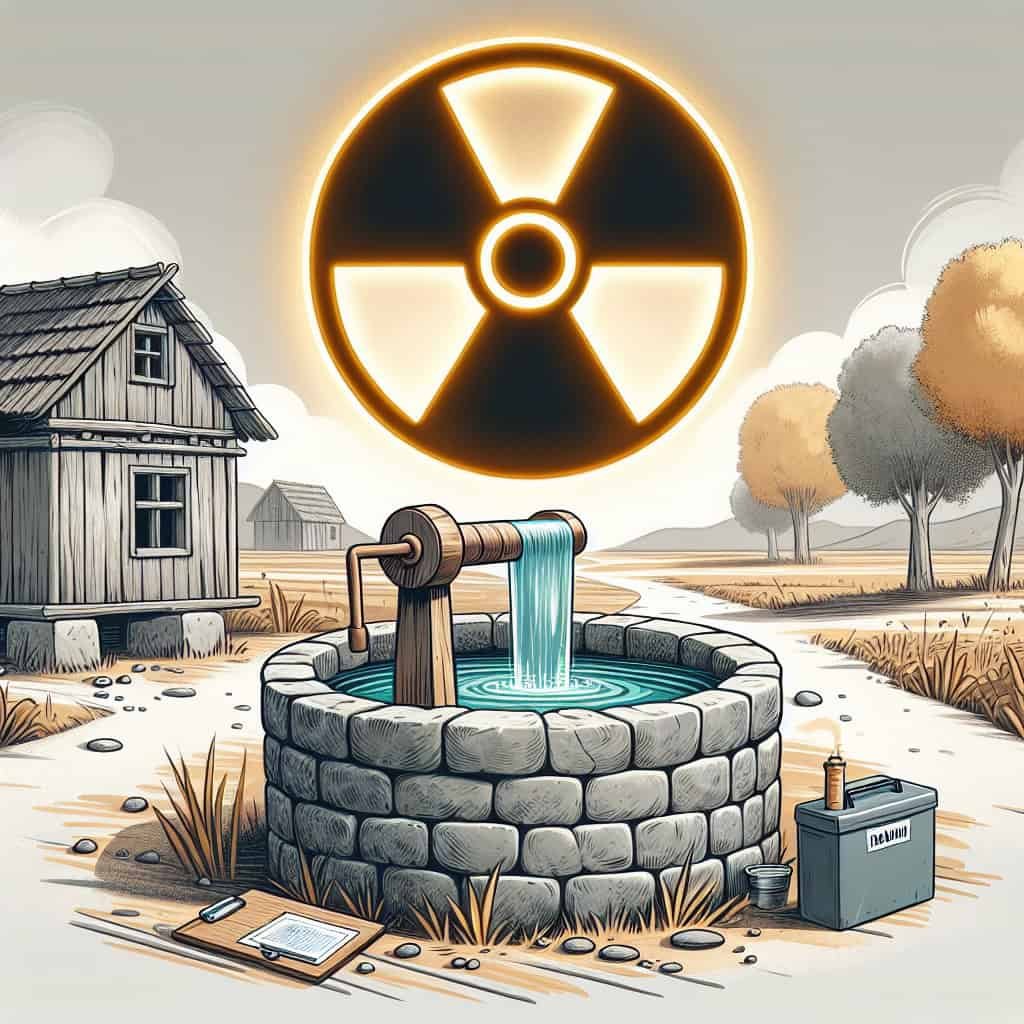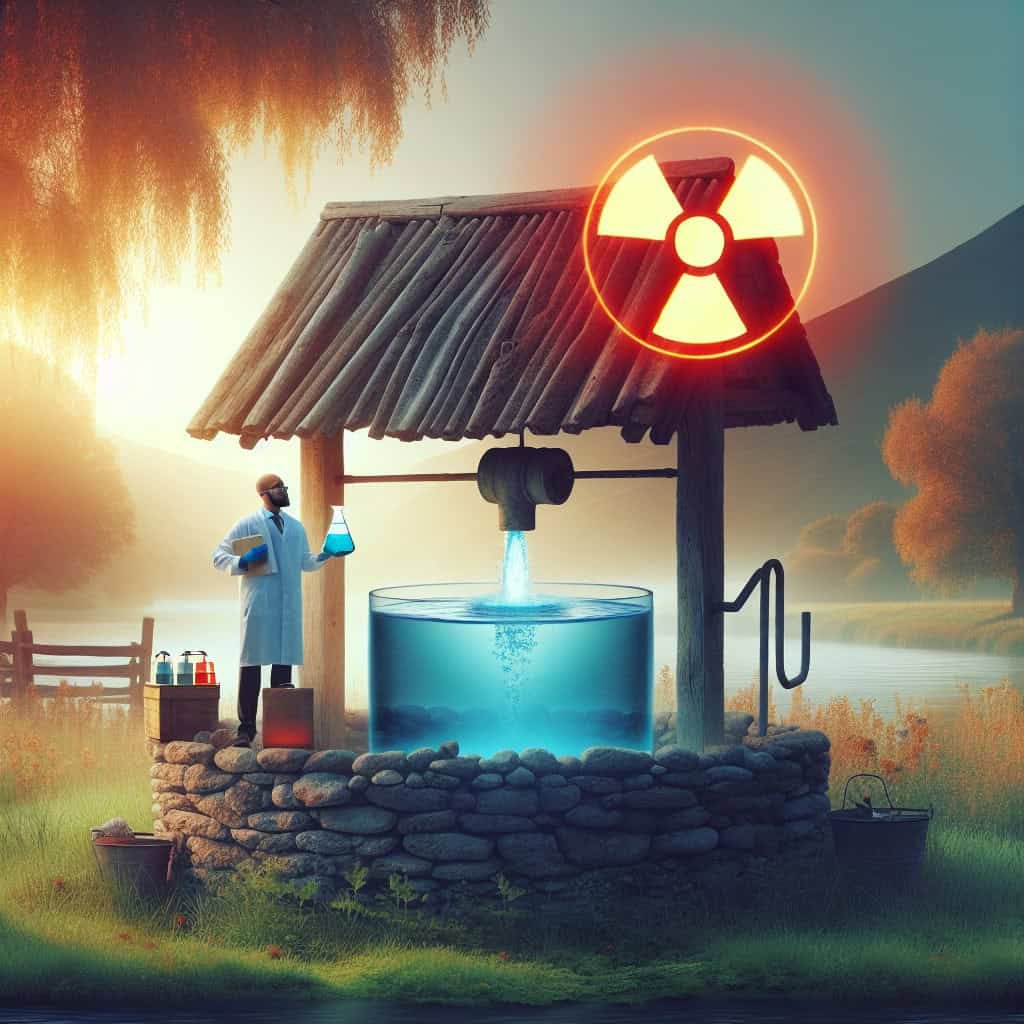In a world where access to clean and safe drinking water is crucial, concerns about the quality of well water with elevated radium levels have emerged. Understanding the potential risks and exploring the regulatory measures in place becomes essential in ensuring the health and well-being of communities relying on well water for their daily needs. This article aims to shed light on the regulations governing well water with elevated radium levels, offering valuable insights and guidance for those seeking to mitigate any potential risks associated with this issue.
Overview
What is Radium?
Radium is a naturally occurring radioactive element that is found in rocks, soil, and water. It is odorless, tasteless, and colorless, making it difficult to detect without proper testing. Radium is classified as a carcinogen, meaning it has the potential to cause cancer. Exposure to elevated levels of radium in drinking water can pose serious health risks.
Health Effects of Radium
Exposure to radium is primarily through ingestion of contaminated water or inhalation of radon gas released by radium. When radium enters the body, it emits alpha particles, which can damage surrounding cells and DNA. Prolonged exposure to radium can lead to an increased risk of developing bone, lung, and other cancers. Other health effects may include anemia, cataracts, and damage to organs such as the liver and kidneys.
Sources of Radium in Well Water
Radium can find its way into well water from naturally occurring deposits in the ground. Certain geological formations, such as those containing granite or shale, are more likely to have higher radium levels. Well water can also become contaminated with radium through industrial activities, such as mining and petroleum extraction. Additionally, radium can be found in some fertilizers and industrial wastes, which may contaminate the surrounding groundwater.
Regulatory Agencies
Environmental Protection Agency (EPA)
The EPA is the federal agency responsible for protecting human health and the environment. They set standards and guidelines for radium levels in drinking water, as well as oversee enforcement and compliance efforts. The EPA collaborates with state and local health departments to monitor and regulate radium levels in well water.
Centers for Disease Control and Prevention (CDC)
The CDC provides guidance and resources to help prevent and control radium exposure. They conduct research, develop health guidelines, and provide educational materials to inform the public about the risks associated with radium in drinking water. The CDC also works closely with other regulatory agencies to address radium contamination issues.
State and Local Health Departments
State and local health departments play a crucial role in enforcing radium regulations at the local level. They work in coordination with the EPA and CDC to ensure compliance with radium standards. These departments often conduct testing and outreach programs to monitor radium levels, educate residents, and enforce regulations.

Maximum Contaminant Level (MCL)
Definition of MCL
The Maximum Contaminant Level (MCL) is the highest allowable concentration of a contaminant in drinking water that is deemed safe for consumption. It is set by regulatory agencies such as the EPA to protect public health. MCLs are established based on extensive research and assessments of potential health risks associated with various contaminants.
EPA’s MCL for Radium in Drinking Water
The EPA has set the MCL for radium in drinking water at 5 picocuries per liter (pCi/L). This limit takes into account both the short-term and long-term health risks associated with radium exposure. Public water systems are required to consistently maintain radium levels below this threshold to ensure the safety of the water supply. It is important for private well owners to also monitor and maintain radium levels within the established MCL.
Testing and Reporting
Radium Testing Methods
Testing for radium in well water can be conducted by certified laboratories using various methods, including alpha and gamma spectroscopy. These methods accurately quantify the concentration of radium in water samples. It is recommended to consult with local health departments or certified professionals to ensure proper testing procedures are followed.
Frequency of Testing
The frequency of radium testing in well water depends on various factors, such as the location, geological characteristics, and historical radium levels. It is generally recommended to test well water for radium at least once every three years. However, more frequent testing may be required if there are changes in the well system, nearby land use, or if new contaminants are detected.
Reporting Requirements
Once radium testing is completed, the results should be reported to the appropriate regulatory agencies and local health departments. This information is vital for assessing the overall radium levels in a particular area and implementing necessary measures to ensure safe drinking water. It is important to keep records of testing and promptly report any elevated radium levels to the appropriate authorities.

Health Risk Assessment
Determining Health Risks
Health risk assessment involves evaluating the potential health effects associated with exposure to elevated radium levels in well water. This assessment takes into consideration factors such as the concentration of radium, exposure duration, and individual susceptibility. By analyzing these factors, authorities can determine the level of risk and develop appropriate mitigation strategies.
Exposure Pathways
The primary exposure pathways for radium include ingestion of contaminated water and inhalation of radon gas. Ingesting radium-contaminated water can result in direct exposure to internal organs, while inhaling radon gas can lead to lung tissue damage. Understanding these exposure pathways helps in determining the potential health risks and implementing effective control measures.
Cancer Risk Estimates
Research has shown a positive association between radium exposure and various types of cancer, including bone, lung, and breast cancer. By estimating cancer risks associated with different levels of radium exposure, scientists and regulators can establish appropriate guidelines and regulations to minimize the risk of cancer development. These estimates help inform the public and promote proactive measures to reduce radium exposure.
Treatment Options
Point-of-Entry Treatment
Point-of-entry treatment systems are installed at the entry point of the water supply, treating all water used in the household. Effective treatment methods for radium removal include ion exchange, reverse osmosis, and coagulation/filtration. These treatment systems can effectively reduce radium levels and provide safe drinking water for the entire household.
Point-of-Use Treatment
Point-of-use treatment systems are installed at specific faucets or fixtures, providing treatment for water used for drinking and cooking purposes. Reverse osmosis and activated carbon filtration are common treatment methods used at the point of use. These systems can remove radium and other contaminants, ensuring the safety of the water consumed by individuals.
Available Treatment Technologies
There are various treatment technologies available for removing radium from well water. Some of the commonly used technologies include ion exchange, adsorption, reverse osmosis, and distillation. Each technology has its own advantages and considerations, and the choice of treatment method depends on the specific radium levels and individual needs. It is recommended to consult with water treatment professionals to determine the most appropriate technology for a particular situation.

Financial Assistance and Grants
State and Federal Funding Programs
To assist well owners in addressing radium contamination issues, various state and federal funding programs provide financial assistance for treatment system installation and maintenance. These programs aim to alleviate the financial burden on individuals and communities affected by radium-contaminated well water. Well owners should explore available funding options and eligibility criteria to access financial assistance.
Eligibility Criteria
Eligibility for financial assistance programs often depends on factors such as income level, geographical location, and severity of radium contamination. Different programs may have specific eligibility criteria, so it is important to review the requirements and determine if the individual or community qualifies for assistance. Local health departments and water resource agencies can provide guidance on the available funding options.
Application Process
The application process for financial assistance programs typically involves completing an application form and providing supporting documentation. This may include proof of income, well testing results, and information about the proposed treatment system. It is crucial to carefully review the application requirements and submit all necessary documents within the specified timeframe. Assistance may be provided in the form of grants or low-interest loans, depending on the program.
Local Regulations
State and County Regulations
In addition to federal regulations, many states and counties have their own regulations governing radium levels in well water. These regulations may impose stricter standards than the federal MCL, and well owners must comply with both federal and local requirements. It is important to be aware of and understand the specific regulations applicable to the local area to ensure compliance and maintain safe drinking water.
Permitting Requirements
Some states and counties require permits for the construction, repair, or modification of wells. Permitting requirements help ensure that well construction and maintenance practices meet established standards and regulations. Well owners should check with local health departments or water resource agencies to determine if any permits are required and what the application process entails.
Restrictions on Well Use
In certain cases, restrictions may be imposed on the use of wells with elevated radium levels. These restrictions may include limitations on the amount of water that can be extracted from the well or requirements for additional treatment measures. Well owners should be aware of any restrictions placed on their wells and adhere to the guidelines to prevent further contamination and ensure the safety of the water supply.

Education and Outreach
Public Awareness Campaigns
Public awareness campaigns play a crucial role in educating individuals and communities about the risks associated with radium in well water. These campaigns aim to raise awareness, promote testing, and provide information about available resources and treatment options. Through various channels such as social media, websites, and community events, public awareness campaigns help empower individuals to take action and protect their health.
Educational Resources
The EPA, CDC, and local health departments provide educational resources to help individuals understand the risks and mitigation strategies associated with radium in drinking water. These resources may include brochures, fact sheets, online courses, and informative websites. By accessing and utilizing these resources, individuals can enhance their knowledge and make informed decisions regarding their well water.
Community Engagement
Engaging with the local community is essential for addressing radium contamination issues effectively. Community engagement efforts may involve conducting workshops, organizing town hall meetings, or establishing advisory committees to solicit input and participation from residents. By fostering a collaborative approach, communities can work together to tackle radium-related challenges, share information, and develop sustainable solutions.
Enforcement and Penalties
Enforcement Measures
Enforcement measures are implemented to ensure compliance with radium regulations. Regulatory agencies, such as the EPA and state health departments, conduct periodic inspections to monitor radium levels and ensure adherence to established standards. Violations may result in warning letters, fines, or legal action, depending on the severity of non-compliance. Enforcement measures are in place to protect public health and hold accountable those responsible for maintaining safe drinking water.
Potential Penalties
Penalties for non-compliance with radium regulations can vary depending on the jurisdiction and the specific violation. Penalties may range from monetary fines to suspension or revocation of permits. The goal of imposing penalties is to incentivize compliance and prevent further contamination of well water. It is crucial for well owners to understand and adhere to regulations to avoid potential penalties.
Appeals Process
If a well owner disagrees with a violation notice or penalty, they have the right to appeal the decision. Most regulatory agencies have an established appeals process that allows well owners to present their case and provide evidence of compliance efforts or extenuating circumstances. Appeals processes typically involve submitting a formal appeal to the appropriate authority and participating in a hearing or review process. Well owners should familiarize themselves with the appeals process to exercise their rights effectively.


